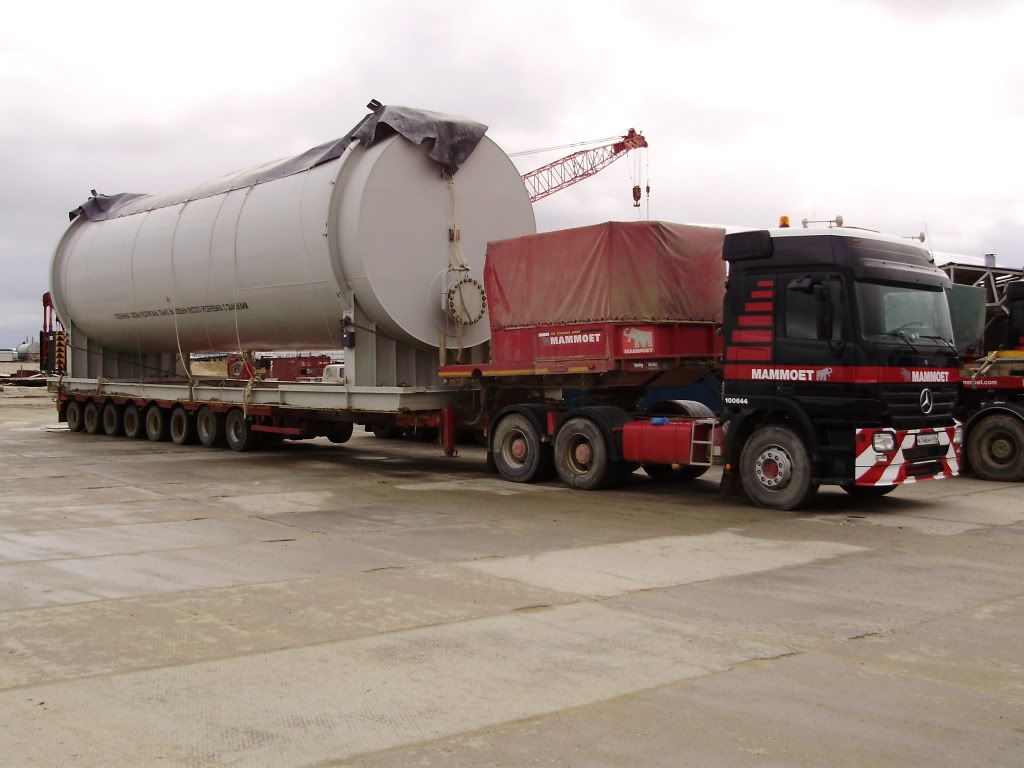Images of the day
This thing:

And this thing:

And this thing: Look at these monsters Montana and Idaho - this is like what will be rolling through your neck of the woods soon.

How did a story this large (literally and figureatively) miss our radar unitl now? From a December 2009 Missoulian story: "starting sometime next fall, and continuing most weekdays for a year, trucks and trailers up to 162 feet long, 24 feet wide and 30 feet high will pass through Missoula County en route from Lewiston, Idaho, to oil fields in northern Alberta." Yeah, these oil fileds in Alberta. Well, not those ones exactly, but what's difference. The ones these trucks will be going to are the Kearl Oil Sands Project, which was approved last year by the Canadian government and is due to launch in 2012. It's all the same ecological destruction in our books.
For those keeping score at home, here's the route the specialized but non-toxic mining equipment
made in Korea will take:
The equipment will be shipped to the Port of Portland and up the Columbia and Snake rivers to Lewiston. There it will be loaded on the special truck trailers, the largest of which has 12 rows of axles, eight tires to the axle, which allows it to “crab” around tight corners, Brockmann said. The trucks will move at a maximum speed of 30 mph on the flat, and at walking speed of 5 mph around corners and down hills, Brockmann said.
They’ll make their way on Highway 12 up the Lochsa River into Montana. The module route through Missoula County will take parts of three days to traverse. Day 1 will be a 32.5-mile leg from Lolo Pass to Lolo. On Day 2, the loads move 22.8 miles down Highway 93, up Reserve Street to Interstate 90, and on to a former weigh station site north of Bonner. Day 3’s route is 105 miles along Highway 200 through Lincoln to Bowman’s Corner and Highway 89.
There’ll be two more days of travel after that before the trucks get to Canada.
Though the shipping material itself isn’t toxic by nature, what it’s contributing to is. And that’s the point of contention for many citizens directly affected by this shipping route. That and the strain this travel will put on roadways and the fragile ecosystems that these trucks will be passing through. According to a wonderful blog post we came across on a blog called Northern Rockies Rising Tide, "Of particular concern is the Lochsa River corridor in Idaho, a steep and narrow valley of almost no developement and many groves of old-growth cedar right along the roadside. For turnouts to occur every couple of miles, as the travel plan demands, they must be built either out into the river or else large portions of mountainside may have to be carved out. The impacts of these turnouts on the health of the river ecosystem and the species (some endangered and endemic) that rely on it are as yet unknown. There is some doubt that a thorough and honest environmental impact assessment will be possible before the project begins if the company intends to stay on schedule."
In terms of assessment and permitting, we weren’t able to find any stories or posts about where they’re at in this process, though a friend in Missoula did tell us that an environmental assessment from the Montana Department of Transportation and EPA is due any day now. We’ll be sure to keep you posted on the developments and the especially the comment period when it opens.